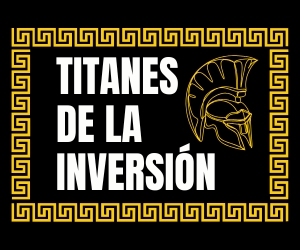Discover how to integrate bonds into a barbell strategy. We offer comparisons, clear advantages over other tactics, and practical examples to optimize your investments.

Barbell Strategy with Bonds
Imagine investing as if you were in a gym, but instead of lifting weights, you're moving money between bonds and stocks. There you have the barbell strategy. Designed for the tightrope walker in all of us, this strategy is a bold and flexible combination. The idea is simple: divide your investments at both ends of the risk spectrum. On one side, you have safe and conservative bonds; on the other, higher-risk assets like fast-growing stocks or even cryptocurrencies. You can thank Nassim Nicholas Taleb, the mastermind behind this game.
Using bonds in this context is not just an option, but a necessity. But why bonds? Well, besides being the boring choice that's always there to save you, bonds act as a cushion during market downturns. When the market collapses faster than the grass at a barbecue, bonds stand firm, protecting your portfolio like a timeless shield. And let's not forget that bonds also offer a fixed income that can help you stay afloat while you wait for your high-risk bets to pay off.
Implementing bonds in your barbell starts with the right selection. Here are a few steps to get started:
Risk Assessment: Calculate how much you're willing to lose. Imagine stocks as an expensive restaurant; sometimes you overpay and are promised a luxury experience that doesn't necessarily deliver.
Bond Selection: Look for government or investment-grade corporate bonds. Remember, we're talking about the safe part of your barbell; nothing too exotic.
Asset Proportion: Allocate your investments so that the bond portion is the steady weight, the secure pillar that counterbalances the highs and lows of the other end.
Take John Smith, for example, who invested 80% in Treasury bonds and 20% in emerging tech stocks. When tech markets fall, his portfolio largely stays afloat thanks to his secure balance of securities. It's an art perfected with patience and practice.
But wait, not everything is rosy. Bonds also have low-interest rates, which means in bullish markets you'll feel like you're missing out on gains, like a forgotten firecracker on New Year's Eve. The key is patience: play the long game and let the confections do their work while stocks recharge.
Advantages over Other Strategies
Now, why be patient with a barbell strategy with bonds when the market offers dozens of other alternatives? What makes this technique superior to, say, hoarding stocks like they're Pokémon? Let's start with versatility: the barbell strategy is like a chameleon, effortlessly adapting to fluctuating market environments. Don't worry about the Tesla CEO's haircut; as long as you keep your barbell balanced, you can relax and still maintain control. But let's break down the real advantages:
Risk Mitigation: Your portfolio won't feel like Russian roulette at a fair. By having bonds at one end of the barbell, you automatically reduce your total risk exposure. It's not just about sleeping better; it's also understanding that you have an ace up your sleeve when the chips are down.
Flexibility: You can adjust the risk ratio according to market movements without the help of a shaman. By increasing or decreasing the bond portion, you make strategic decisions that can save or enhance your financial kingdom.
Consistent Income: With part of your barbell in bonds, you generate a steady cash flow, which helps you while you wait for your stock unicorn to emerge from the shadows.
Sure, there are attractive aspects to other strategies. The buy-and-hold approach, for instance, suggests full commitment to one path, akin to marrying a single stock in Las Vegas. However, in the context of the modern economy and unforeseen volatility, the barbell approach offers a hedge that other methods can't match.
This is reflected in the story of Susan White, who, faithful to her strategy of massive stocks for years, turned to the barbell to diversify and protect. While the rest of her peers were plummeting during bank panics, Susan saw her bond fraction provide a respite. Sure, it's not as glorious as betting it all on GameStop, but sometimes being the hero of your own story includes a backup strategy.
Finally, compared to other famous strategies, like closing your eyes and betting on meme stocks, the barbell strategy with bonds requires a bit more planning. But hey, whoever said being a successful investor was easy probably also thought running a marathon didn't require training. And here we are, putting financial sweat where it counts.
Practical Examples
So far, we've talked about theories and advantages as if we were selling a new car in a midnight infomercial. Let's take a breather and see how the barbell strategy with bonds and stocks works in real life. Because, let's be honest, we all enjoy a good success story (or cautionary tale).
There's the legend of Tom and Jerry, two business partners who decided to carry out their own interpretation of this strategy. They agreed that 60% of their investments would be in municipal bonds — those that have existed since the times of the pharaohs — and the other 40% in a mix of emerging stocks and cryptocurrencies. Surprising, right? Well, markets can be as cruel as telenovela villains, and when the cryptocurrency market crashed, their bonds acted as a life jacket, keeping their financial dreams afloat.
Then there's Lisa, a lone trader who thought she could manage everything on her own. With a focus of 50% on high-quality corporate bonds and the other 50% in ESG stocks, Lisa aimed to balance her moral and financial risk. The bonds cushioned her market slips, allowing her to live another day and fight new battles. It seemed like a move straight out of Sun Tzu's book, but with finances instead of war.
Beyond the anecdotal but impressive examples, perhaps the greatest benefit of using a barbell strategy lies in the ability to adapt to sudden change. It's not about timing the market, but time in the market, as some financial guru on TikTok might say. However, having a consistently secure part of your portfolio offers the alternative to pivot without losing balance.
As a famous thinker once said, "The secret of change is to focus all your energy not on fighting the old, but on building the new." Your barbell strategy is not only to weather market storms; it's there to create the future you've always imagined. And step by step, even alcohol is not necessary to survive this financial rollercoaster.





